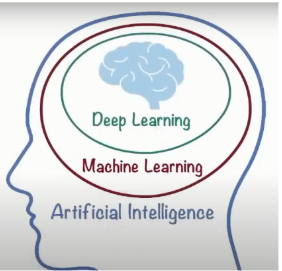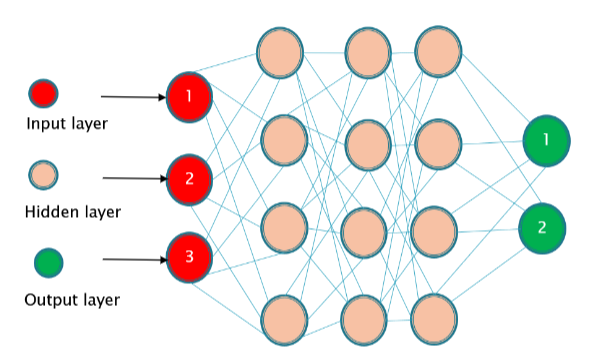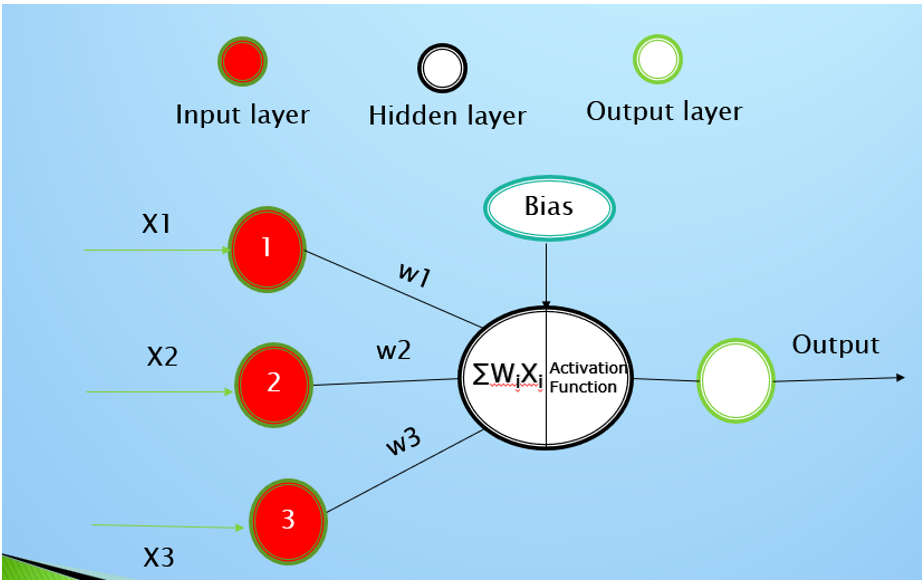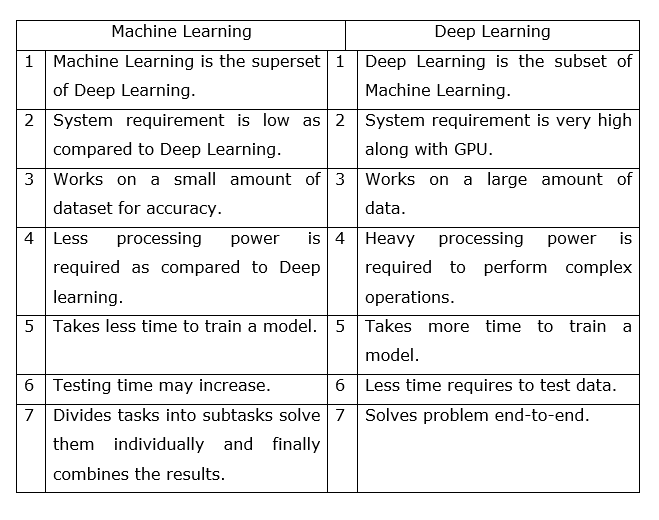Introduction To Deep Learning
What is Deep Learning?
Deep learning is the Subset of Machine Learning. It is based on the collection of statistical techniques of machine learning features and those feature hierarchies are based on Artificial Neural Networks to achieve Artificial Intelligence (AI).

It is implemented using neural networks, and the idea behind the Artificial Neural Network is the biological neurons which are nothing but brain cells. These neural networks attempt to simulate the behavior of the human brain and mimic the working of the human brain in processing data allowing it to learn from a large amount of data.
How does Deep Learning work?
In Deep learning, neural networks try to mimic the human brain through data inputs, weights, bias, and some activation functions. These are working simultaneously to accurately recognize the hidden patterns to extract features and some meaningful information and to describe and classify the objects within the data.
What is Neural Network?
A neural network refers system of neurons that are based on mathematical computational models for threshold logic forming a network-like structure. Threshold logic is a combination of a series of algorithms and mathematics that allow a computer program to recognize patterns. A typical neural network consists of neurons, connections, weights, biases, propagation function, and a learning rule.
Sample Diagram of a Neural Network

A Neural Network generally contains three different types of layers named as the input layer, hidden layer, and output layer. There is one input layer, one output layer and a hidden layer can be one or multiple depending on the requirements.
Input Layer: The input layer is the first layer of a Neural Network which is composed of artificial input neurons, and brings the initial data into the system for further processing by subsequent layers of artificial neurons.
Hidden Layer: The hidden layer in an artificial neural network is a layer in between the input layer and the output layer, where artificial neurons take in a set of weighted inputs along with bias and produce an output through an activation function. The number of hidden layers can be 1 or multiple. N number of hidden layers can be implemented in a Neural Network according to the requirements.
Output Layer: The output layer in an artificial neural network is the final layer of neurons that produces desired results or outputs for the program.
What is a Perceptron?
A Perception is a unit of Neural Network that does certain operations to detect features of Business Intelligence in input data.
It is a function that maps its input “x” which is multiplied by the learned weights coefficient, and generates an output value “f(x)”.
Perceptron can be 2 types i.e., single-layer perceptron and multi-layer perceptron. Single-layer perceptron can learn only linearly separable patterns whereas multi-layer perceptron Contains two or more layers having greater processing power and can process non-linear patterns as well.
Single Layer Perceptron Work Flow Diagram

The above figure represents the workflow diagram of a single-layer perceptron. Where X1, X2, and X3 are the inputs. W1, W2, and W3 are the weights of the Neural Network. The weighted sum of input data from the input layer is further processed inside the hidden layer. Inside the hidden layer, an activation function is there to activate neurons and a Bias is added for controlling the value at which the activation function will trigger.
What is Bias?
It is an additional parameter added to the Neural network, which helps in controlling the value at which the activation function will trigger.
What is the Activation Function?
An activation function decides whether a neuron should be activated or not by calculating the weighted sum and further adding bias to it. The purpose of an Activation Function is to add non-linearity to the output of a neuron to make it capable of learning and performing more complex tasks. Without an Activation Function, a Neural Network is just like a Linear Regression.
Types of neural networks
There are several types of neural networks are used. Some popular neural networks are: -
Machine Learning vs. Deep Learning

About the Author
Silan Software is one of the India's leading provider of offline & online training for Java, Python, AI (Machine Learning, Deep Learning), Data Science, Software Development & many more emerging Technologies.
We provide Academic Training || Industrial Training || Corporate Training || Internship || Java || Python || AI using Python || Data Science etc


